|
Displaying items by tag: Civil War
The Minnesota Marine Art Museum (MMAM) in Winona is proud to announce a large, two-gallery exhibition by one of America’s most beloved artists – Winslow Homer (1836-1910).
The exhibition, titled “The Wood Engravings of Winslow Homer,” will be exhibited through August 7, 2015. The exhibition highlights Homer’s engravings which include his portrayals of the American Civil War, as well as his landscapes, seascapes and inspirations from daily life. Complementing these prints are two significant paintings by Homer that are from the collections of the MMAM, including an oil painting and a watercolor.
Yale’s Beinecke Rare Book & Manuscript Library and the Yale University Art Gallery are acquiring the Meserve-Kunhardt Collection, one of the nation’s most historically significant photographic collections and the definitive assemblage of portraits of Abraham Lincoln.
“With this remarkable acquisition, Yale has secured its place as the premier institution for the study of American photography from the Civil War to the Gilded Age,” says Yale President Peter Salovey. “I am delighted that faculty, students, and scholars from around the country and around the globe will have the opportunity to study this collection, learn from it, and share that knowledge.”
Despite the sometimes irreconcilable differences that culminated in the Civil War (1861-65), Newport and other Northern cities maintained close social, economic, cultural, and artistic ties with the South from the Colonial period through the Gilded Age. The 2015 Newport Symposium, North and South: Crosscurrents in American Material Culture, invites a fresh look at regional differences in American furnishings, silver, textiles, painting, architecture, and interiors to reveal the complex exchange of ideas and enduring influences.
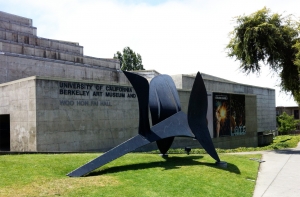
The University of California, Berkeley Art Museum and Pacific Film Archive presents "American Wonder: Folk Art from the Collection," on view October 1 through December 21, 2014. Featuring approximately fifty portraits, landscapes, weather vanes, decorative sculptures, and other works dating from the wake of the Declaration of Independence War to the end of the Civil War, this exhibition captures glimpses of young America during a period of boundless optimism, massive growth, and eventual upheaval. This distinguished collection at BAM/PFA—one of the most impressive American folk art collections from this period anywhere—results from the generosity of two collectors and patrons, Bliss Carnochan and Nancy Edebo. "American Wonder" is the last major art exhibition to open in BAM/PFA’s current museum building at 2626 Bancroft Way before the institution moves to a new location, currently under construction, in downtown Berkeley in early 2016.
American Wonder starts in late eighteenth- and early nineteenth-century New England, where the country’s newly independent citizens were beginning to help define and assume a national identity—one aligned with the goals of liberty, self-improvement, and advancement.
The collection of American art at the Shelburne Museum tells the story of a new country finding its way through the 1700s and the 1880s. The 540 paintings help illustrate the history of a nation growing through westward expansion. The artwork, with its images of country stores and horse-drawn carriages, also begins to explain the Shelburne Museum itself, which was founded by Electra Havemeyer Webb in 1947.
"(The paintings) were kind of animating the museum for visitors," according to the museum's director, Tom Denenberg. "Without a doubt, the museum is already fixed in her head when she's buying these (paintings) in the late 1950s."
At first glance, this exhibition might seem a bit quaint, its subject — textiles and the Civil War — evoking Americana more than American history. But this show, “Homefront & Battlefield: Quilts and Context in the Civil War,” which opened last month at the New-York Historical Society after originating at the American Textile History Museum in Lowell, Mass., does much more: It turns Americana back into history.
The show traces its thematic threads through that period’s fabric with such care that, after seeing the patterns, you will not easily look at coarse woven cloth, the American flag, quilts, mourning clothes — or perhaps even the Civil War — in quite the same way again. Textiles, we come to see, did not just reflect the war’s events or were just another element of the conflict; in many ways they were at the war’s heart.
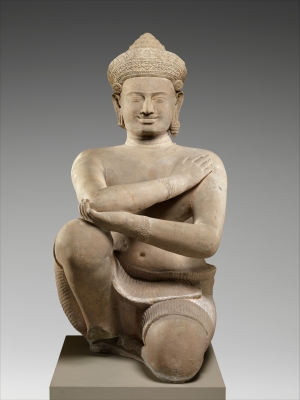
Two 10th century statues that were looted from jungle temples have been returned to Cambodia by the Metropolitan Museum of Art. The Met announced in May 2013 that they would send the Khmer sculptures known as Kneeling Attendants back to Cambodia after being displayed in the museum’s Asian Wing for 10 years.
Hab Touch, director general at the Ministry of Culture, said, “The return of the statues is a historic event for us.” Seven Buddhist monks blessed the life-size statues during a religious ceremony attended by officials from the government and the Met at the airport. Upon their return to Cambodia, the sculptures will be put on display at the Peace Palace in Phnom Penh and later kept at either the National Museum in the capital or at a museum in the northwestern city of Siem Reap.
The two statues were looted from the Koh Ker temple site in the early 1970s. At the time, Cambodia was being ravaged by a brutal civil war and looting was rampant. The works were donated piece by piece to the Met in the late 1980s and 1990s. Recent documentary research revealed that the statues were in fact looted from Cambodia.
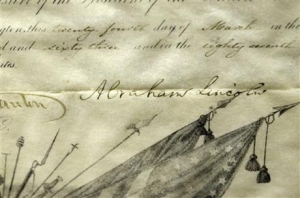
While James Douthat, the recently retired president of Pennsylvania’s Lycoming College, was cleaning out a closet in his office, he uncovered a rare document signed by former president of the United States, Abraham Lincoln. The historical certificate dates back to 1863 and names the college’s founder, Benjamin Crever, a Civil War chaplain. Preserved in a black frame, the document is in good condition and Lincoln’s signature is clearly visible. Secretary of War Edwin M. Stanton also signed the document.
Douthat, who has worked at Lycoming College for 24 years, had vaguely remember hearing about the document but was shocked to find it in his own closet. While no one is sure how the certificate got misplaced, they are pleased to have it back. An early appraisal estimated the document to be worth in excess of $6,000. The piece is significant for the small college because it adds some distinction to its name. Located in central Pennsylvania, Lycoming only has about 1,400 students.
Crever was one of 500 Union hospital chaplains. He served at a military hospital in Frederick, MD between July 1862 and August 1865, a period that included the battle of Gettysburg. The document is being kept in the archives of the college’s library for the time being.
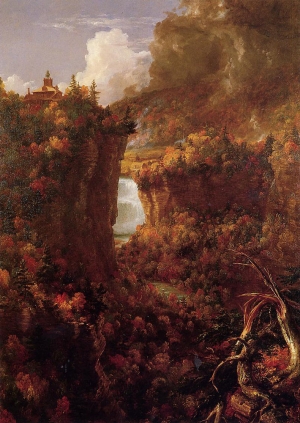
In February, the Fred L. Emerson Foundation and the Seward House Museum in Auburn, New York announced that they would sell a significant painting by the English-born American artist and founder of the Hudson River School, Thomas Cole (1801-1848). The sale of the work, titled Portage Falls on the Genesee (1839) is intended to benefit the institution, which opened to the public in 1955 and became a registered National Historic Landmark in 1964.
Portage Falls was given to the American politician William H. Seward while he was the governor of New York prior to the Civil War. Seward went on to serve as Secretary of State under Abraham Lincoln and Andrew Johnson and after his death his home and its contents were donated to the Fred L. Emerson Foundation. The Foundation opened the Seward Museum but it became a fully independent, not-for-profit institution in 2009; the Cole painting was retained by the foundation.
The work, which depicts what is now Letchworth State Park in western New York, has been on view at the Seward Museum for 170 years and not everyone is pleased with the Foundation’s decision to sell it. A group known as the Seward Legacy Preservation has formed and will hold their first meeting at the Auburn Public Theater in Auburn, New York on Monday, April 29, 2013. Members of the organization, which include descendants of Seward, will fight to restore the painting to its former place in the Seward House. The painting is currently being kept in a secure storage location.
Portage Falls is said to be worth millions of dollars, which the Foundation and the Seward Museum plan on splitting when the painting sells.
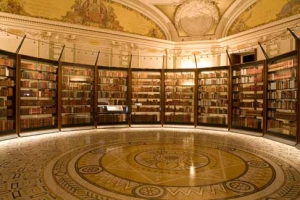
As part of its Civil War in America exhibition, the Library of Congress in Washington, D.C. is exhibiting the John Hay copy of the Gettysburg Address through May 4, 2013. The manuscript went on view on March 22, 2013 in the Library’s Thomas Jefferson Building. Admission is free and open to the public Mondays through Saturdays.
The Gettysburg Address is one of the best-known speeches in American history. Delivered by President Abraham Lincoln during the Civil War on November 19, 1863 at the dedication of the Soldiers’ National Cemetery in Gettysburg, PA, the Gettysburg Address took place four and a half months after the Union armies defeated those of the Confederacy at the Battle of Gettysburg. The Battle of Gettysburg, which saw the largest number of causalities in the Civil War, is often considered the war’s turning point. Widely recognized as a literary masterpiece, the Gettysburg Address conveys in some 270 words the principles upon which the nation was founded, honors the men who had lost their lives in battle, and asks all citizens to renew their commitment to freedom and democracy.
The John Hay copy of the Address is the second of five known manuscript drafts. Lincoln personally gave the copy to Hay, one of his two secretaries. His other secretary, John Nicolay, is believed to have the first draft, known as the Nicolay copy. Hay’s descendants donated the Hay and Nicolay copies of the Gettysburg Address to the Library of Congress in 1916.
Civil War in America, which opened on November 12 2012, commemorates the 150th anniversary of the Civil War and includes diaries, letters, maps, song sheets, newspapers, photographs, drawings, and artifacts that reveal the complexity of the Civil War through the individuals who experience it firsthand. The exhibition is on view through January 1, 2014.
|
|
|
|
|